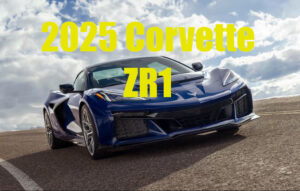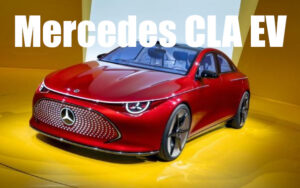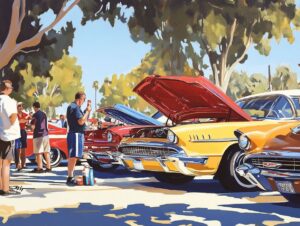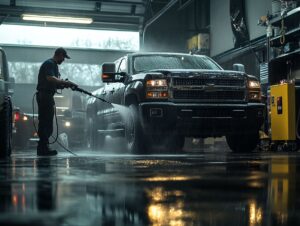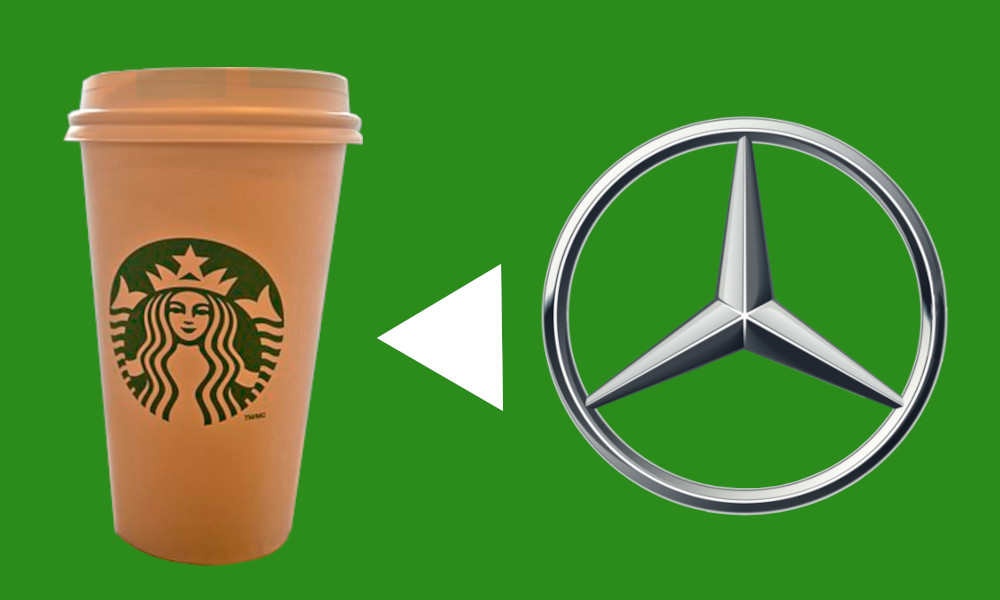
Mercedes-Benz and Starbucks are teaming up to revolutionize EV charging with the installation of rapid DC chargers at over 100 Starbucks locations across the U.S., making recharging both your car and yourself more convenient than ever before.
Short Summary:
- Over 100 Starbucks locations will get 400-kilowatt DC fast chargers.
- The initiative starts with the I-5 corridor from Canada to Mexico.
- This venture aims to enhance the EV charging experience and promote sustainability.
Mercedes-Benz and Starbucks Converge on EV Charging Initiative
Starbucks and Mercedes-Benz are embarking on a partnership that could dramatically improve the landscape of electric-vehicle (EV) charging. As announced recently, Mercedes-Benz High-Power Charging, an enterprise dedicated to developing EV infrastructure, will set up DC fast charging stations at more than 100 Starbucks locations across the United States.
The first phase of this ambitious project focuses on the iconic Interstate 5 (I-5) corridor, facilitating EV travel from Canada to Mexico along the West Coast. This segment will usher in high-power 400-kilowatt chargers, making it convenient for EV drivers to power up their vehicles while enjoying a cup of coffee.
The Critical Need for Improved EV Charging
With the growing adoption of electric vehicles, the demand for public charging stations has skyrocketed. However, the availability and quality of these stations have often been lacking, impeding more rapid EV adoption. “The collaboration between two leading brands like Mercedes-Benz and Starbucks will uplift the charging experience for all EV drivers,” stated Andrew Cornelia, President and CEO of Mercedes-Benz High-Power Charging.
“This is no longer about going out of your way to find ‘fuel’; it’s about integrating the process into everyday life,” added Cornelia.
Studies have shown that the availability and convenience of charging stations are two critical factors influencing consumers’ decisions to switch to electric vehicles. By positioning chargers at Starbucks locations, the initiative aims to address these concerns head-on.
Convenience Along Key Corridors
The installation will commence with approximately 400-kilowatt chargers along the I-5 corridor, enabling quick and efficient charging stops. According to the official announcement, these chargers can provide a significant charge within 15 to 20 minutes and are compatible with a wide array of EV models.
Each participating Starbucks location will be outfitted with anywhere from four to ten charging points, contingent on local infrastructure and the concentration of EVs in the area. This network ensures that customers will not only have access to quality coffee but also speedy and reliable vehicle charging options.
Expanding the Charging Network
While the initial focus is on the I-5 corridor, the long-term vision is far more expansive. Mercedes-Benz High-Power Charging’s collaboration with Starbucks is just one part of a broader $1 billion investment in EV charging infrastructure. This will eventually extend to urban hotspots and “charging deserts”—areas with limited access to charging solutions.
Additionally, Mercedes-Benz is a member of the EV charging supergroup Ionna, which includes auto giants such as BMW, General Motors, Hyundai, Kia, Honda, Toyota, and Stellantis. Ionna aims to roll out its first stations later this year, amplifying the reach of high-quality charging facilities.
The Starbucks Vision for Sustainability
Starbucks has been at the forefront of integrating sustainable practices into its business model. This project aligns with the company’s broader goals of reducing its carbon footprint by 50% by 2030. “Public EV charging should be as easy as getting a great cup of coffee — and now it can be,” said Michael Kobori, Chief Sustainability Officer at Starbucks.
Previously, Starbucks collaborated with Volvo Cars and ChargePoint to install 50 DC fast chargers at 15 locations on a route from Seattle to Denver. The new collaboration with Mercedes-Benz will dramatically expand this initiative.
“We’re trying as a company to be as sustainable as we can be,” said a Starbucks barista from Washington state. “Why not do it in a way that people can realize they’re participating, that it’s all shared, so that they can come along for the journey?”
A Comprehensive Approach to Charging
Incorporating charging stations at Starbucks locations is more than a convenience; it represents a significant push toward a more sustainable, electrified future. Convenience stores and other retailers like 7/11 and Love’s have also shown interest in adding charging stations, hoping to capitalize on an evolving, captive market.
The need for a more robust public charging network has never been more critical. Currently, about 61,000 publicly available charging stations provide Americans with Level 2 fast-charging capabilities, according to the Pew Research Center. However, a considerable gap remains, especially in rural areas where only 10% of the charging infrastructure is available.
Future-Proofing EV Infrastructure
The new chargers from Mercedes-Benz High-Power Charging are designed to dispense up to 400 kilowatts of power, ensuring rapid charging times. While no American EVs currently accept this level of power, building infrastructure for the future is a priority. The initiative also includes the construction of high-end charging lounges to enhance the overall user experience.
By offering fast and convenient charging solutions, the initiative aims to lure EV drivers who are often in a hurry. The focus is on high-transit corridors and urban areas with significant EV adoption rates, making sure that the charging stations are strategically placed for maximum utility.
Global and Local Reach
This partnership is not isolated. Similar initiatives are cropping up globally. Costa Coffee in the U.K. and Tim Horton in Canada are also installing fast chargers to meet the needs of drop-in customers. Subway’s “Oasis” stores in the U.S. feature fast-charging stations, picnic areas, and green spaces to offer a more engaging environment for customers.
For perspective, the Starbucks locations earmarked for the installation of new charging stations include a diverse range of locales, ensuring both urban and rural areas benefit from this initiative. Locations include cities from Seattle, WA, all the way to Broomfield, CO, taking in some of the West Coast’s most iconic landscapes.
Key Takeaways
While this initiative represents a significant step towards improving EV infrastructure, the ultimate goal transcends merely adding charging stations. It’s about integrating charging into everyday life, minimizing inconvenience, and promoting a sustainable future. “Partnerships like this are hugely important as we continue to move towards a more sustainable, electrified future,” noted Anders Gustafsson, Senior Vice President of the Americas Region and President and CEO of Volvo Car USA, another notable participant in EV infrastructure development.
The collaboration between Mercedes-Benz and Starbucks marks a significant milestone in the journey towards a sustainable and convenient future for EV drivers. With both brands committing to extensive investments and strategic installations, the future of EV charging looks brighter and more accessible than ever.
Sources:
https://insideevs.com/news/726856/starbucks-ev-charging-mercedes/
https://www.greenbiz.com/article/more-coffee-less-carbon-inside-starbucks-strategy-ev-drivers
https://www.chinookobserver.com/news/state/mercedes-benz-high-power-charging-and-starbucks-team-up-to-launch-an-elevated-ev-charging/article_8b6dc414-6861-5b98-8e31-295eb9a8015a.html
https://stories.starbucks.com/stories/2024/find-an-ev-charger-at-starbucks-stores-from-seattle-to-denver/
https://denvergazette.com/news/starbucks-volvo-boost-ev-charging-stations/article_6d47cabc-b000-11ee-90ca-ff0563281eef.html
The AutoPros.online team is dedicated to bringing you high quality automotive content for professionals and car enthusiasts, with topics like auto detailing, performance modifiations, repairs and automotive news.

